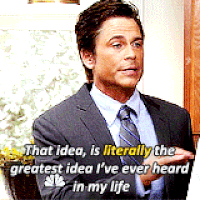
Article Groups: Literally the Greatest Idea Ever
I learned so much from other article groups’ presentations and workshops. It would have been impossible for each of us to spend a number of weeks on each topic, but having the class divide into groups with specific topics and then teach what we learned to each other was an awesome example of the success of peer-to-peer learning!
The Adolescent Identity and Literacy group did a fantastic job of explaining the ways our identities, how we see ourselves and how others see us, shape how we learn. Though our identities may change throughout our lives, adolescence is when these questions of identity are beginning to form. This group pointed out the vital role new media plays in this process for youth today. They have a multitude of platforms on which to express a variety of identities each with a different audience in mind. These adolescents are learning how to shape the way others view them through what they post and where they post it, and all while they are trying to figure out how they view themselves. This group also discussed the role self-expression plays in schools, asking questions like: how much expression should be allowed and what advantages and disadvantages occur by allowing students to express their identity? This discussion largely revolved around the idea of uniforms and how they can both positively and negative affect learning by allowing students to express, and therefore better understand, who they are while simultaneously creating some level of inequality between students.
The Hip-Hop and Literacy group gave a fantastic presentation with a variety of useful and interesting outside resources. The most interesting aspect of this presentation was their emphasis on the fact that hip-hop is just as valid as poetry, just as much an example of literacy as poetry. This is a completely different argument than the idea that rap is poetry. When this topic gets discussed, most of the time people think that to give rap validity they need to call it poetry. This group wasn’t afraid to recognize rap as its own separate form of literacy. They of course talked about its similarities to poetry the way someone would talk about similarities between poetry and prose, but they acknowledged the distinction between the two which I found very refreshing. Their video “Vital Tips on How to Rap Fast” and their discussion about raps and scansion was super interesting. They also had new ideas regarding how to implement rap into a class room both as written pieces of literature and through freestyling. A lot of these ideas were shown in the video of Kendrick Lamar visiting a classroom.
The Video Games and Literacy group also did a great job. I’ve already written quite a bit about video games and literacy because I was part of the What Video Games Have to Teach Us about Literacy and Learning book club. They discussed many similar ideas, such as the importance of low risk learning in video games and education and the role that community and teamwork play. Their activity in which we were sent on an IRL quest was a really interesting examination of how video game principles can be applied in real life situations and classrooms. After returning from our quest they asked us interesting questions about communication and strategizing.

 Website:
Website: